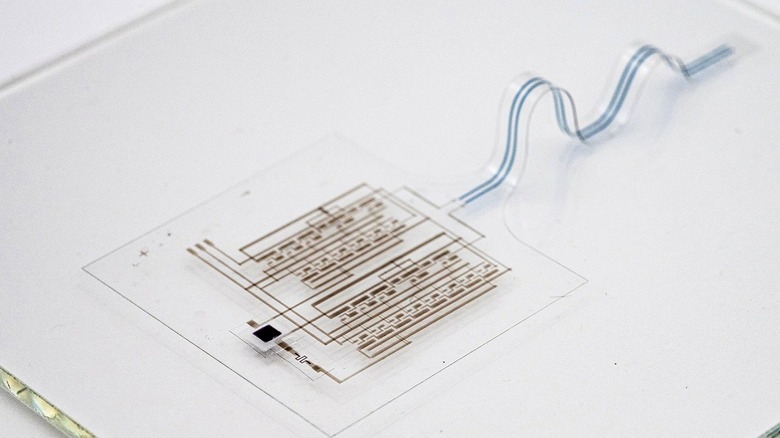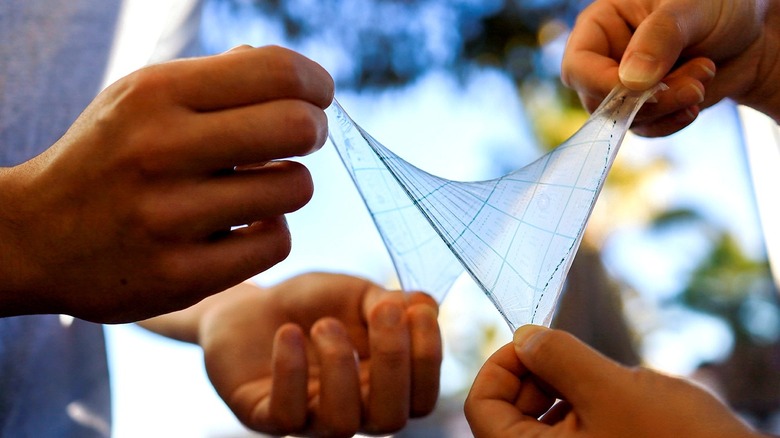This Incredible 'E-Skin' Technology Communicates With The Brain Like Real Skin
A team of Stanford University engineers has created a soft electronic skin that senses external stimulus, and shares it to the brain instead of talking to an electronic device. Stretchable electronics that serve as secondary skin represent a piece of the next generation of wearable tech. The experts at Stanford also demonstrated a savvy spray-on skin late in 2022 that is capable of understanding hand gestures in addition to showcasing a smart bandage that transmits wound-healing progress to a CPU. MIT engineers are working on a sweat-proof electronic skin that is capable of body vital measurements, while a team at the Graz University of Technology achieved a breakthrough with a hybrid smart skin material capable of sensing temperature, moisture, and pressure.
But so far, every iteration had one shortcoming. Instead of passing the signals to the central nervous system, the electronic skin's data was passed on to a chip or an external device. The soft e-skin engineered by the Stanford team converts the temperature and pressure sensations into an electrical signal format suitable for communicating directly with the brain, just like the nerve impulses generated when nerve endings in the skin feel something.
Mimicking the human skin receptors
The electronic skin employs a triple-layer dielectric design, with one of the layers made of the rubber used in surgical gloves. Electric signals are transmitted through each layer with the help of an organic nanostructure network.
Each sensory layer can be customized based on need, and then sandwiched together delicately to form a composite structure that works in the same fashion as the nerve receptors in human skin. "Each electronic layer is just a few tens to hundred nanometers thick and the finished material of half a dozen or so layers is less than a micron," details the official release documenting the innovation.
For comparison, the average thickness of human hair is around 70 microns. However, an electronic skin that is less than a micron in thickness is extremely difficult to handle due to its fragility.
"But that's actually too thin to be handled easily, so we use a substrate to support it, which brings our e-skin to about 25-50 microns thick – about the thickness of a sheet of paper," Bao said.
The road ahead
The goal was to create a soft integrated circuit that acts similarly to the sensory receptors in the human body, while making them operate at such low voltage that they don't pose any harm to the person wearing the skin patch. Eventually, the engineers realized that 5 volts were enough to detect external stimuli such as pressure and temperature changes, just like the real human skin.
This electronic skin is touted to be the first of its kind that merges "sensing and all the desired electrical and mechanical features of human skin in a soft, durable form." The team is hoping this tech will one day be used in prosthetics,providing a realistic sense of human touch.
The long-shot goal is to wirelessly relay the stimulus signals to a chip implanted within the peripheral nervous system of a person, allowing them to maneuver their prosthetic limbs. The team at Stanford is currently focused on enhancing the sensing capabilities of their novel electronic skin innovation, with hopes that it would one day interface with the human brain and other body parts.
Notably, the same team reported a method for printing stretchable circuits on a skin-like material with the same kind of equipment that is currently used to make silicon-based chips.


